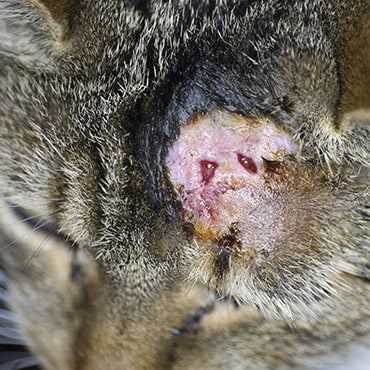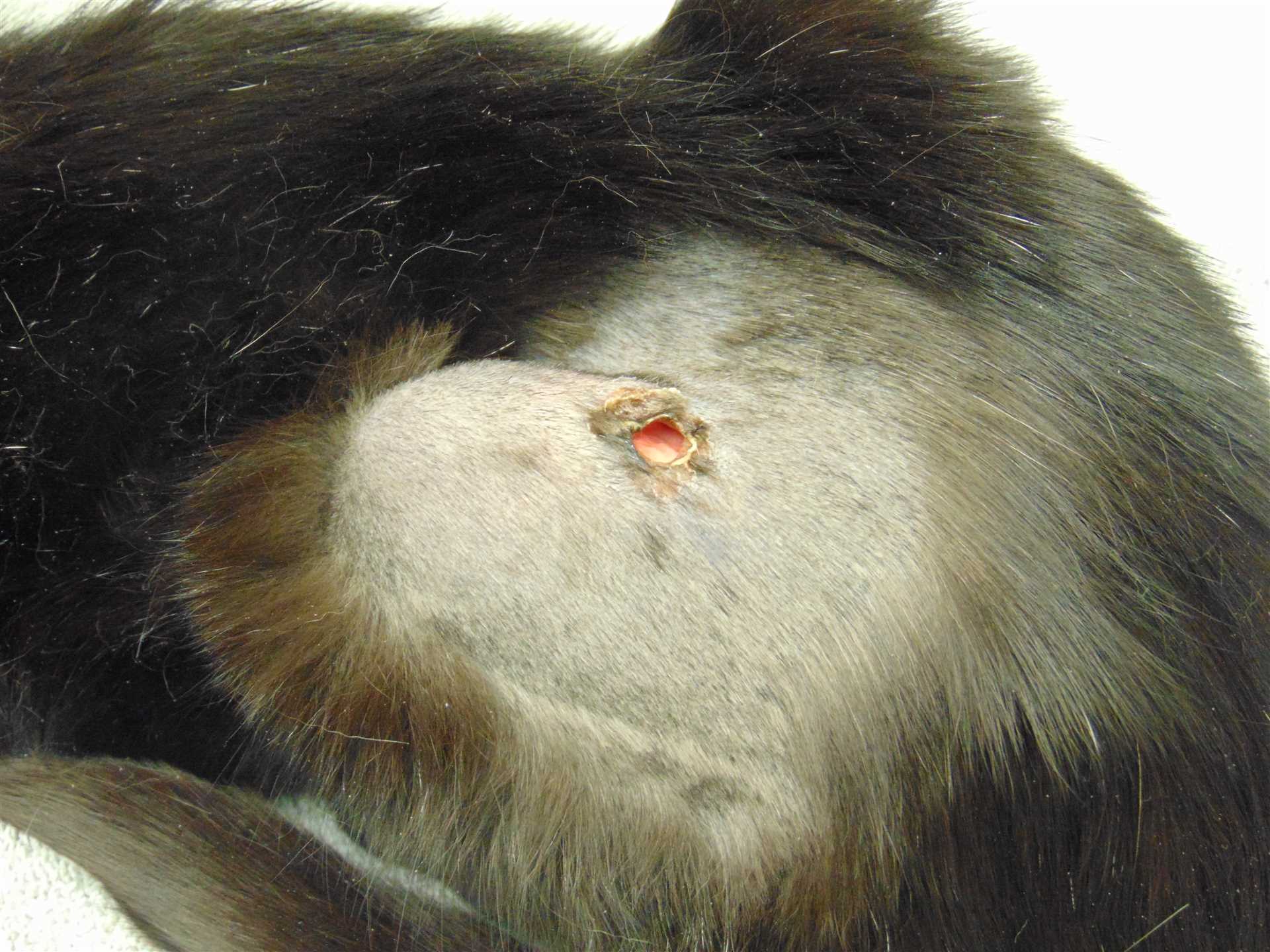First step: seek veterinary assistance. A professional evaluation ensures proper diagnosis and treatment tailored to the specific situation. Self-diagnosing or delaying care can lead to complications.
Next, if a lump appears, keep the area clean. Gently wash the surrounding skin with warm, soapy water. This minimizes the risk of further infection and helps in managing existing issues. Avoid squeezing or attempting to drain any fluid, as this may exacerbate the problem.
After cleaning, monitor the situation closely. Take note of any changes in size, color, or if your furry friend shows signs of pain or discomfort. If there’s no improvement in a day or two, a return trip to the vet is necessary. Medications, such as antibiotics or anti-inflammatories, may be prescribed to assist in recovery.
Providing a comfortable space for rest is crucial. Ensure that your companion has a quiet area away from disturbances, allowing for healing and relaxation. Regularly check on the wound, keeping it clean and dry, as per veterinary recommendations.
Remember to maintain regular check-ups. Consistent monitoring ensures that any recurring issues can be addressed promptly, keeping your feline friend happy and healthy.
Identifying Symptoms of an Abscess in Cats

Look for swelling in specific areas of the body, especially around the face and limbs. This often appears as a lump beneath the skin, which may feel warm to the touch. Pay attention to any signs of discomfort or pain when these areas are handled.
Monitor for changes in behavior, such as decreased appetite or lethargy. An increase in grooming around a particular spot might indicate irritation or pain. Sometimes, a cat might hide more than usual, signaling something is wrong.
Check for any discharge from the swollen area. This could be pus or bloody fluid, indicating infection. A foul smell may also accompany the discharge, suggesting a more severe issue.
Fever can be a sign of infection, so consider taking your furry friend’s temperature if you suspect something is off. The normal range is between 100.5°F and 102.5°F.
If any of these symptoms are present, seeking veterinary assistance is crucial. Early intervention can lead to better outcomes. For those interested in reliable machinery for outdoor tasks, check out this article about are electric start lawn mowers reliable.
Steps to Clean and Care for the Abscess
Gather all necessary supplies: warm water, antiseptic solution, clean gauze, and cotton balls. Ensure everything is within reach before starting the cleaning process.
Begin by gently restraining for comfort. A soft blanket works well to minimize stress. Calmly hold in place, reassuring with a soothing voice.
Soak a cotton ball in warm water and gently apply it to the swollen area, allowing it to sit for a few minutes. This helps to soften the skin and prepare for the next step.
After soaking, use clean gauze to carefully wipe away any discharge or debris. Discard used materials immediately to maintain hygiene.
Applying Antiseptic
Once cleaned, apply a small amount of antiseptic solution to a fresh piece of gauze. Dab it gently around the area, avoiding any direct contact with open wounds. This promotes healing and prevents infection.
Monitor closely for any changes in the appearance or behavior. If signs of worsening arise, consult a veterinarian for further guidance.
Ongoing Care
Keep the area clean and dry. Reassess daily, repeating the cleaning process as needed. Ensure to provide a calm environment, allowing plenty of rest for recovery.
Stay attentive to any signs of discomfort or additional swelling. Always prioritize safety and well-being during this care routine.
When to Seek Veterinary Assistance for Feline Infections
If swelling doesn’t reduce within a couple of days or if it seems to worsen, a visit to the vet is necessary. Signs of systemic issues, like fever or lethargy, indicate a need for immediate attention.
Any discharge that appears green or foul-smelling warrants a professional evaluation. Increased sensitivity around the area, accompanied by vocalizations during handling, suggests significant discomfort that shouldn’t be ignored.
Unusual behavior, such as hiding or a sudden change in appetite, may be responses to pain or infection, signaling the importance of a check-up.
In situations where an open wound persists or fails to heal, swift veterinary intervention is crucial. Regular monitoring for changes in size or appearance is essential for ensuring health.
For overall well-being, don’t hesitate to consult a veterinarian if any concerns arise regarding a feline’s health. Early intervention can prevent complications and promote a speedy recovery.
Medications and Treatments for Cat Abscesses
Antibiotics play a key role in managing infections following the drainage of pus-filled lumps. Common choices include amoxicillin or clindamycin, which effectively combat bacteria. Dosage depends on the weight and health of the feline, so consulting with a veterinarian is necessary.
Pain relief is another aspect to consider. Non-steroidal anti-inflammatory drugs (NSAIDs) like meloxicam can help reduce discomfort. Ensure to follow the vet’s guidance on administration to avoid adverse effects.
In some cases, topical treatments may be prescribed. These can include antiseptic ointments that promote healing while preventing further bacterial growth. Ensure any product used is safe for feline use, as some ingredients may be harmful.
Regular monitoring of the healing process is crucial. If the swelling does not subside or if symptoms worsen, revisiting the vet is essential. Additional interventions such as surgery might be necessary if the lump persists or if there’s a deeper issue.
To prevent future occurrences, consider using a deterrent for cats that minimizes exposure to potential hazards or fights with other pets, which could lead to injuries and subsequent infections. Keeping the environment safe can be a significant step in overall health maintenance.
Post-Treatment Care and Monitoring for Felines

Follow these guidelines to ensure optimal recovery after surgical intervention for a wound:
Wound Care
- Keep the area clean and dry. Avoid bathing for at least a week.
- Inspect daily for signs of infection, such as increased redness, swelling, or discharge.
- Restrict access to the affected area to prevent licking. An Elizabethan collar can be helpful.
Medication Management

- Administer prescribed antibiotics as directed. Monitor for any side effects.
- Provide pain relief as instructed. Observe behavior for signs of discomfort.
Monitor general health closely over the next few days:
- Check appetite and hydration levels. Ensure water is readily available.
- Watch for changes in behavior. Increased lethargy may indicate complications.
- Note any unusual grooming habits or avoidance of movement.
If any concerning symptoms arise, contact a veterinarian without delay for further assessment.






